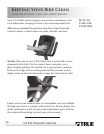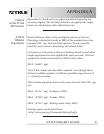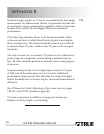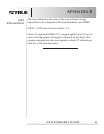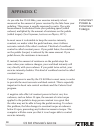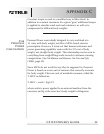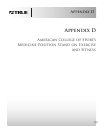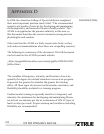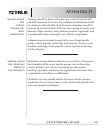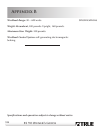
CS 8.0 Owner’s Guide
Appendix C
98
As you ride the CS 8.0 Bike, your exercise intensity is best
measured as the amount of power received by the bike from your
pedaling. This power is usually expressed in watts. The watts
measurement is calculated from your pedaling speed (called
cadence) multiplied by the amount of resistance on the pedals
(called torque). (See Feynman, Lectures on Physics, 1971.)
In most cases it is desirable to keep the exercise intensity
constant, no matter what the pedal cadence, since it allows
accurate control of the rider’s workout. This kind of workload
control is called constant power. If you pedal faster, the resistance
on the pedals (torque) is reduced by the same amount. If you
pedal slower, the resistance is increased.
If, instead, the amount of resistance on the pedals stays the
same when your cadence changes, your workload intensity will
vary directly with your cadence. If you pedal twice as fast, your
exercise intensity doubles. This kind of workload control is called
constant torque.
Constant power is used by the CS 8.0 Bike in most cases, in order
to provide the most accurate workload control. This is especially
important in heart rate control workouts and the Calorie Goal
program.
A negative side-effect of constant power is that at very low
cadences, such as below 55 rpm, the amount of extra torque
applied to the pedals to keep power constant is so great that
the rider may not be able to keep the pedals moving. To reduce
this problem, the bike changes to constant torque at cadences
below 55 rpm, preventing any further increases in torque. The
computer will also warn you that it is no longer able to control
exercise intensity.
Constant
Power &
Constant
Torque



